I'm using FFMPEG libraries do do some video manipulation, and due to complexity of filters and image overlaying, I have to run the process in multiple passes. This means, my process is as such: Open original video, decode it, run -complex_filter, recompress the video in whichever format the original video was encoded. Open the output from the first pass, run another -complex_filter, etc-etc. Sometimes I have to do the above 3-4 times. My concern is that the video, with every compression is losing quality - obvious signs of that is the file is shrinking in size with every pass.
With the above, I have two questions:
Would it make sense to, after first manipulation, instead of saving the video in its original format, I chose some format that is lossless, and then perform my passes one after the other, knowing that the quality remains the same, then on the final pass I recompress one-time into the format of the source. If so, what format of a video would you recommend? ProRes 4444? Any other formats I shell consider? Any parameters I should set and carry-over from encoding to encoding?
With every step I carry over all extra streams of audio and other meta data. Wouldn't it be more efficient to strip everything except the video, run my video passages over and over and not to need for adding -c:a copy and c:s copy? Then on my final run, merge all streams from the original source to the output file? If yes, how will I carry the ffmpeg command specifically? I have a video that has 1 video stream + 15 audio streams + some extra tmcd which my ffmpeg cannot read.
Thank you.
Edit 1:
if the input video has a video codec = dvvideo, and if dimensions of the video is 1280x1080, that means the video doesn't have a typical square pixels. I first need to resize the video, in doing so I scale the video up. Then I can run my filters:
pass-1: -vf scale=1920x1080 (this step is skipped if the video is of a normal x to y ratio) pass-2: -filter_complex: which calls my special filter that adds some proprietary watermark to a video pass-3: -filter_complex: "0overlay=5:21:enable='between(t,2,3)+between(t,4,5)+between(t,6,8)'" (sole objective is to inserts an icon.png at a location near where the watermark was placed in previous step.) pass-4: -vf scale=1280x1080 (this step scales the video back, if pass-1 was executed)
I could probably rewrite my 'C' filter code at some point in the future to accommodate this logic of checking for 1280x1080, as well as inserting this icon.png, and do it all in one step, but for right now, I thought just using 2-step process if a normal video, or a 4 passes if needs scaling, and utilize something of a lossless format as a temp file solution (I arbitrary chose ProRes 4444 v5, but open to suggestions), should minimize the losses during recompression to the video.
Steps 1 and 4 are conditional, and only applicable if: if vcodec == 'dvvideo' and aspect_ratio < 1.2: # 1280x1080 ratio has about 1.16 I run steps 1->4. Otherwise only steps 2 & 3:
Step1:
ffmpeg -i in.mov -vf scale=1920x1080 -map 0:v? -map 0:a? -map 0:s? -map_metadata 0 -b:v 115084915 -maxrate 115084915 -minrate 115084915 -c:v prores_ks -profile:v 5 -preset ultrafast -crf 0 -c:a copy -timecode 00:00:00.00 -c:s copy -y step2.mov
Step2:
ffmpeg -i step2.mov -filter_complex " myFilter=enable='between(t,0,30)':x=15:y=25:size=95:etc-etc..." -map 0:v? -map 0:a? -map 0:s? -map_metadata 0 -b:v 115084915 -maxrate 115084915 -minrate 115084915 -c:v prores_ks -profile:v 5 -preset ultrafast -crf 0 -c:a copy -timecode 00:00:00.00 -c:s copy -y step3.mov
Step3:
ffmpeg -i step3.mov -i icon.png -filter_complex "[0][1]overlay=15:20:enable='between(t,1,3.600)+between(t,4,5.500)+between(t,6,20)' " -map 0:v? -map 0:a? -map 0:s? -map_metadata 0 -b:v 115084915 -maxrate 115084915 -minrate 115084915 -c:v prores_ks -profile:v 5 -preset ultrafast -crf 0 -c:a copy -timecode 00:00:00.00 -c:s copy -y step4.mov
Step4:
ffmpeg -i step4.mov -map 0:v? -vf scale=1280x1080 -map 0:a? -map 0:s? -c:v dvvideo -pix_fmt yuv422p -b:v 115084915 -maxrate 115084915 -minrate 115084915 -r 29.97 -top 1 -color_primaries bt709 -color_trc bt709 -colorspace bt709 -vtag dvh6 -map_metadata 0 -c:a copy -timecode 00:00:00.00 -c:s copy -y final-output.mov
Since I post my entire set of ffmpeg commands, maybe someone could recommend how to make my output match input so that I don't lose timecode entry: